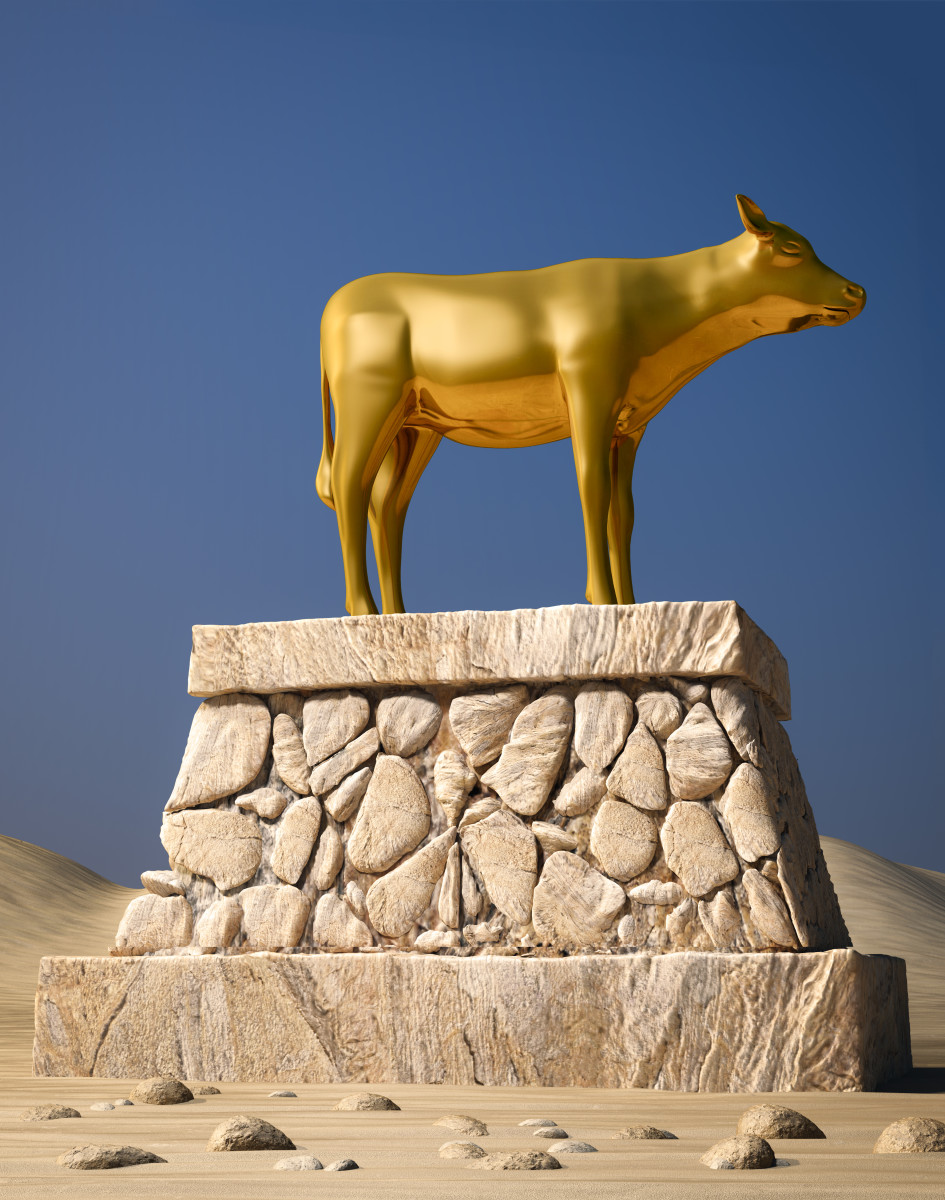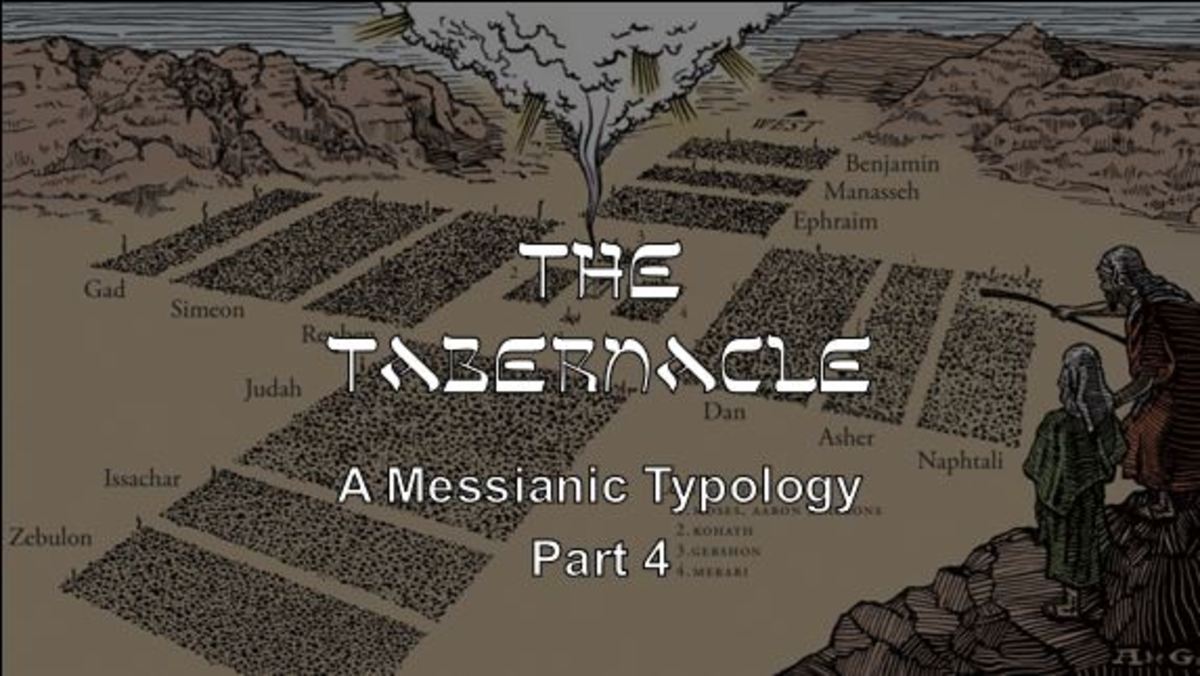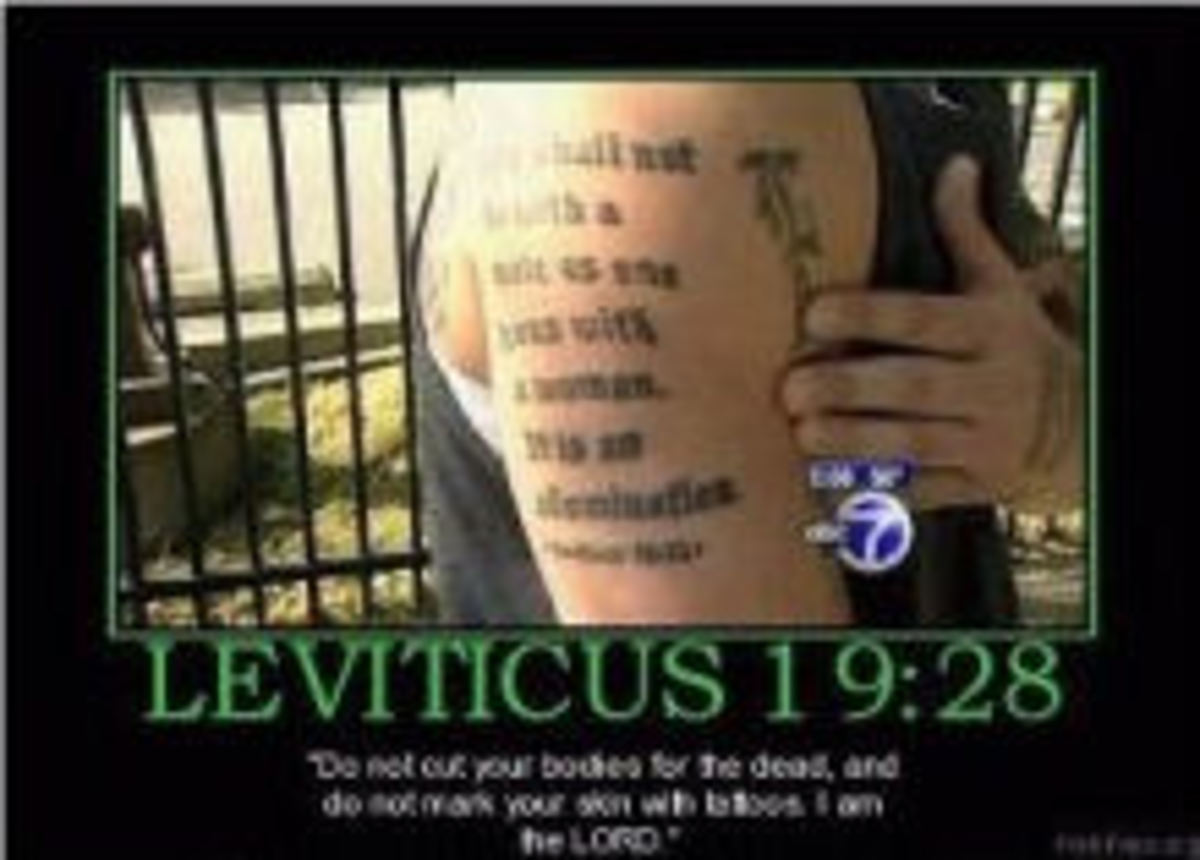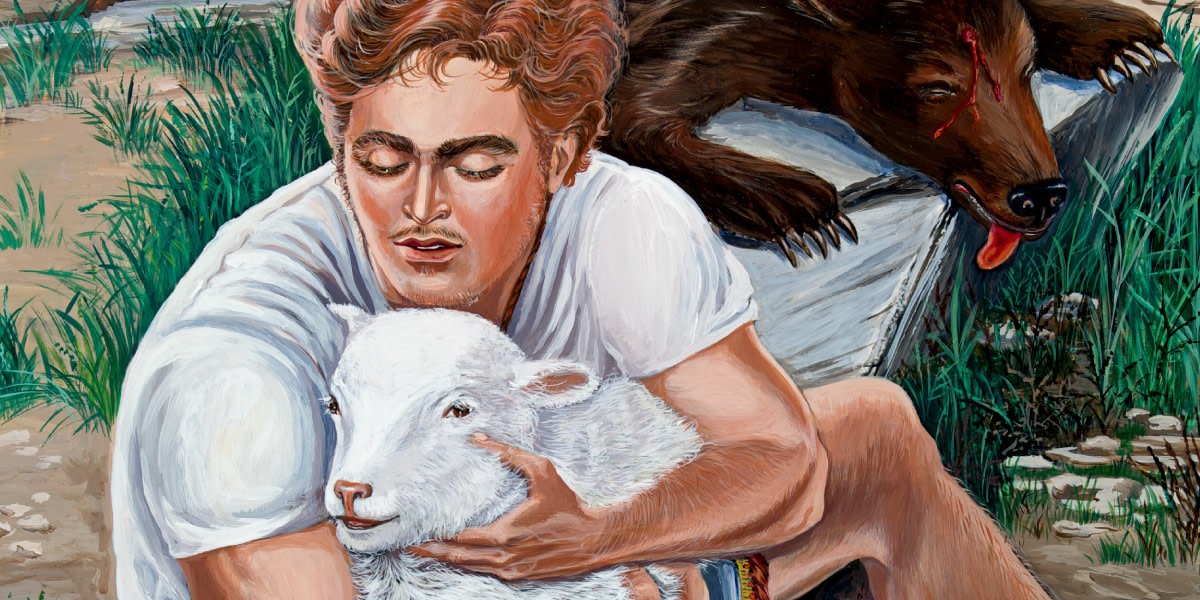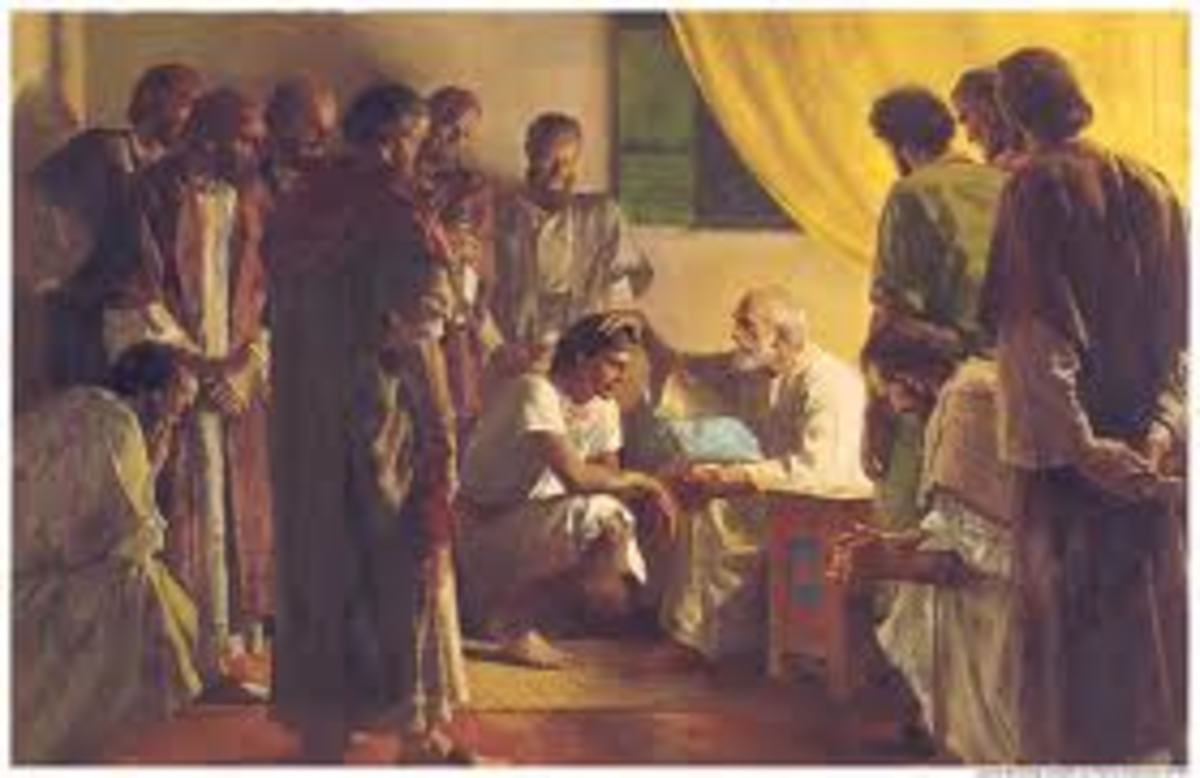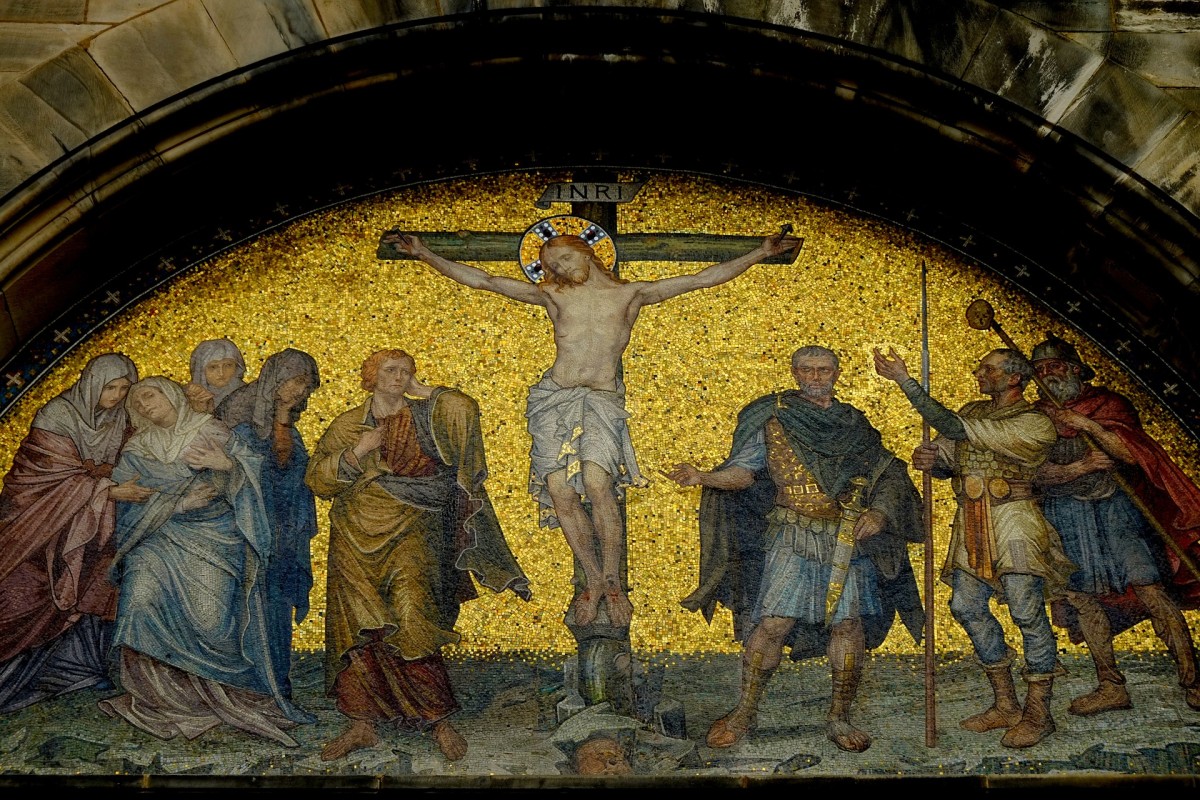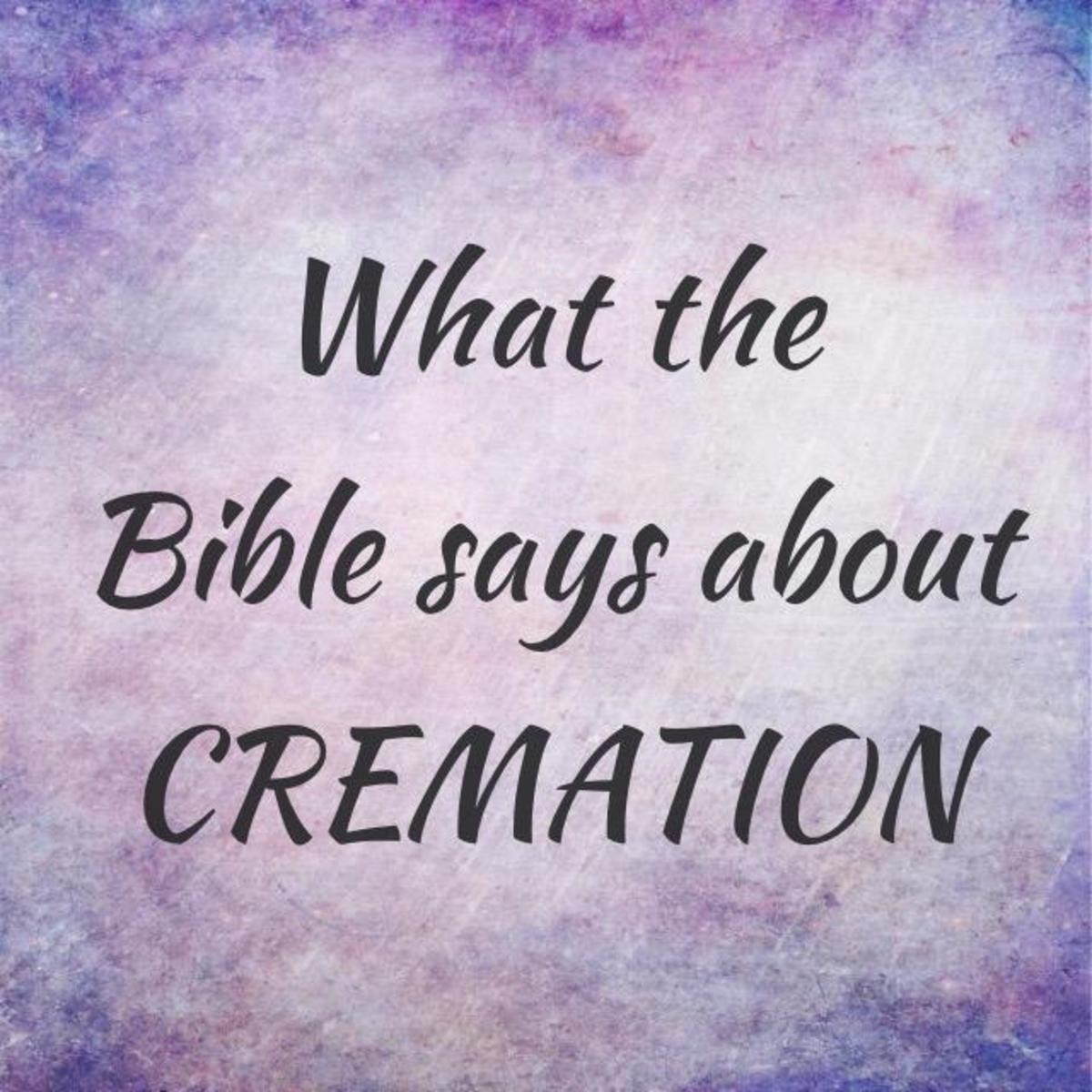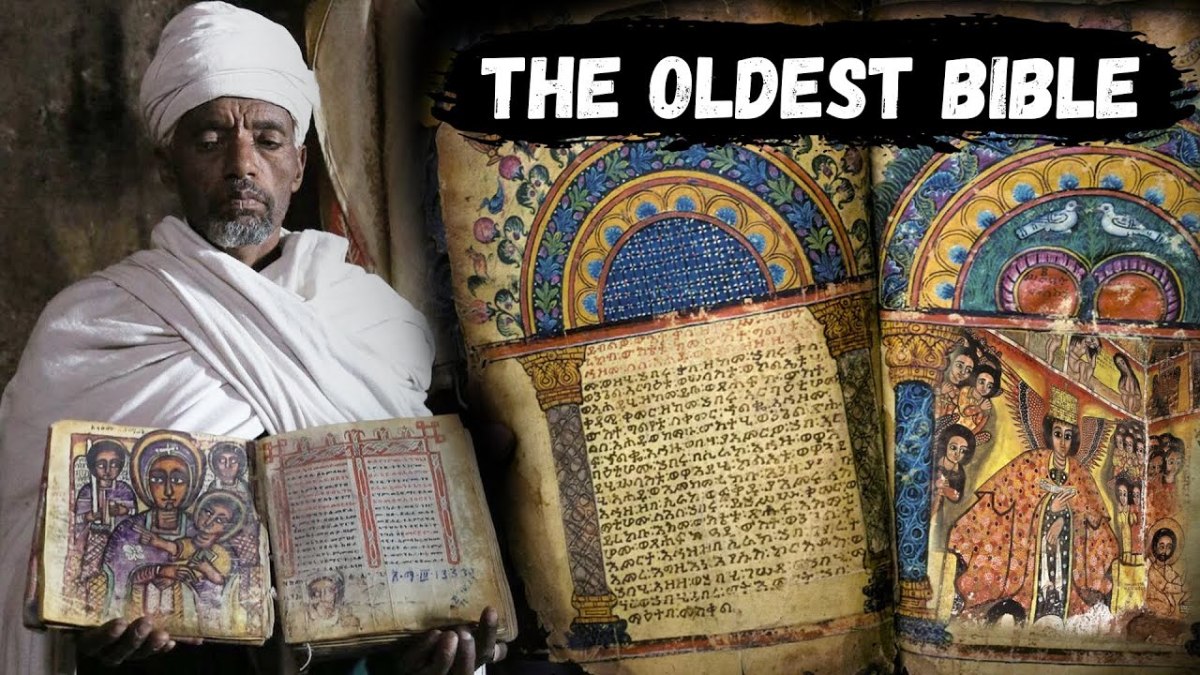Bible: What Does Leviticus 9-12 Teach Us About Sacrifice and Sanctification?
The Glory of God
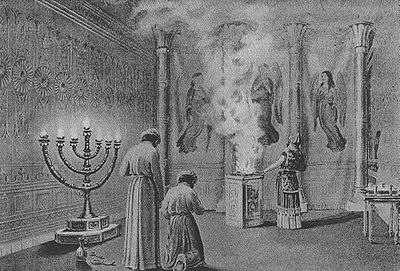
Glory Appears After Right Sacrifices
Their consecration completed, Aaron and his sons offer a sin offering and a burnt offering at Moses’ command on the eighth day (vv. 1-2; cf. Ezek. 43:27 for the same format at the millennial temple).
Anticipating an appearance of the glory of God (v. 4), Israel also obediently brings sacrifices: a sin offering, two burnt offerings, two peace offerings, and a grain offering (vv. 3-6).
Following Moses’ direction, Aaron offers his personal sacrifices—the sin (vv. 8-11) and the burnt (vv. 12-14).
Then he performs the people’s sacrifices—the sin (v. 15), the burnt (v. 16), the grain (v. 17), and the peace offerings (vv. 18-21)—, and completes the prescribed ritual with his sons’ help.
After Aaron had finished his work, he blesses the people, and he and Moses enter the tabernacle of meeting.
When they come out, the glory of the LORD appears to the people, and His fire consumes the sacrifices, causing Israel to shout and fall down in worship (vv. 22-24).
[Just how many Israelites comprise the “congregation” that assembled before the LORD at this time?]
Nadab and Abihu
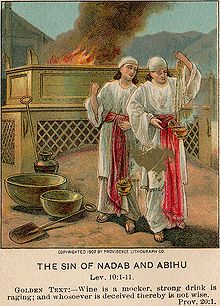
Eleazar
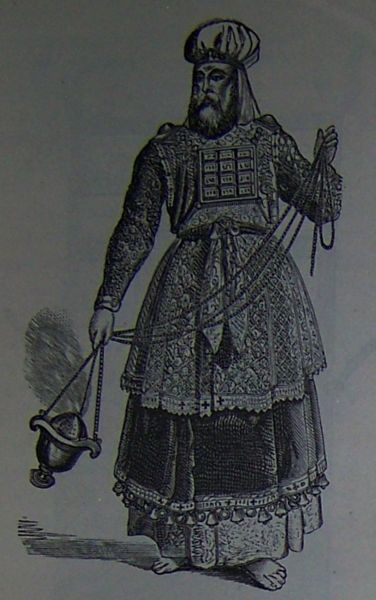
Leviticus 10
But not only does the fire of the LORD devour the animal carcasses, it also incinerates Nadab and Abihu, Aaron’s sons, for offering a profane sacrifice shortly thereafter (vv. 1-2).
[Perhaps their sin stemmed from drunkenness; see the LORD’s prohibition of such conduct in 10:9].
To prevent undue complaint or sorrow, Moses admonishes his brother about how seriously God regards priestly holiness (v. 3).
Moses then instructs his uncle’s sons to carry their cousins out of the camp (vv. 4-5).
He also warns Aaron and his remaining sons, Eleazar and Ithamar, not to show traditional outward signs of mourning, lest God judge both them and the people (v. 6a).
Instead, the people (“the whole house of Israel”) themselves should weep bitterly for this “burning” (v. 6b).
Obedient to the word of the LORD, the anointed priests stay at the door of the tabernacle of meeting, and consequently do not die (v. 7).
God prohibits Aaron and his sons from drinking alcoholic beverages when they enter the tabernacle of meeting (vv. 8-9) for two reasons:
(1) Not imbibing wine enhances moral and religious discernment (v. 10), and
(2) Sobriety enables them to give moral and religious instruction to the people (v. 11).
Now Moses instructs Aaron and his sons to take and eat the food that remained from Israel’s sacrifices: the grain offering (vv. 12-13), the breast of the wave offering, and the thigh of the heave offering (vv. 14-15).
Aaron must eat these portions in a clean place, and may share them with his sons and daughters (vv. 13, 14).
A minor controversy erupts over a certain sin offering, a goat, which Aaron’s sons burn up rather than eat (vv. 16-17).
Moses points out that its blood was not brought inside the holy place, and they did not eat it in a holy place where they ought to have taken it (v. 18).
Aaron’s reason for not eating the goat that day—the death of his sons—propitiates his brother (vv. 19-20).
Lesson from Restrictions
view quiz statisticsLeviticus 11
God’s instructions continue as He lists for Moses and Aaron those foods that Israel is and is not permitted to eat (vv. 1-23).
He allows His people to eat cud-chewing animals which have divided hooves (v. 3), but prohibits the consumption of certain ones within this group (v. 4).
These latter beasts—badgers, camels, hares, and swine—are therefore unclean (vv. 5-8).
[Among these animals, only the swine both divides the hoof and does not chew the cud.]
Creatures with fins and scales which frequent the waters (“seas or rivers”) Israel may eat, but those aquatics without fins and scales are an abomination to them (vv. 9-12).
The LORD provides a lengthy list of unclean birds (vv. 13-19), and a short list of edible insects (locusts, grasshoppers, crickets) [vv. 21-22].
He also prohibits the consumption of four-footed flying insects (vv. 20-23).
Verses 24-47 deal with the subject of how to handle situations with unclean animals; the directions are both explicit and detailed.
Touching or carrying part of a carcass of an animal that does not meet both qualifications stated earlier or that “goes on all fours” causes one to be unclean until evening (vv. 24-28).
Moses provides a list of unclean, creeping things which cause other things to be unclean if their dead carcasses touch, fall upon, or fall into them (vv. 29-35).
Israel must break unclean earthen vessels and even ovens or cooking stoves if such occurs (vv. 33-35), yet cisterns (or springs) and dry seeds to be planted do not become unclean (vv. 36-38).
Israelites may not eat or carry the carcasses of edible animals that die unexpectedly, or they will become unclean (vv. 39-40).
Any creeping thing—belly crawlers, those that go on all fours, multi-footed animals—are also listed as inedible (vv. 41-43).
The LORD reiterates His demand that Israel follow his commands concerning edible and inedible creatures, so that they may be a separated people (vv. 44-47).
Mary and A Sin Offering
view quiz statisticsLeviticus 12
In this short chapter the LORD instructs Moses about a postpartum ritual.
Giving birth to a male child makes a woman unclean seven days; on the eighth day the parents must circumcise the boy (vv. 2-3).
The woman must remain in the “blood of her purification” for thirty-three days, not touching any consecrated thing during this period (v. 4).
A female child makes her unclean fourteen days, and the woman must remain in the “blood of her purification” for sixty-six days (v. 5).
[The passage begs the question: “Why must the new mother remain in such a state twice as long for a female child as for a male?”]
When she completes these days, the woman must offer a yearling lamb as a burnt offering and a pigeon or turtledove as a sin offering (v. 6).
After the priest sacrifices these animals, she is clean of the flow of her blood (v. 7).
The indigent may bring two turtledoves or two pigeons—one for a burnt offering and one for a sin offering (v. 8; cf. Luke 2:22-24).
© 2014 glynch1

